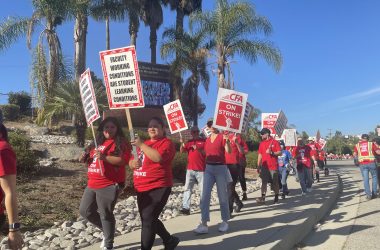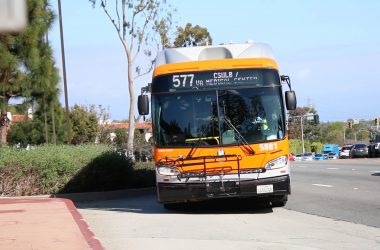The current semester began with a slight increase in student population, but, according to general manager of parking and transportation services Mark Rudometkin, the parking situation has been “the smoothest start” of the past few years.
“It’s almost scary how well it has gone,” Rudometkin said.
Rudometkin credits the university’s efforts to promote neighborhood outreach and alternative methods of transportation for decreases in neighborhood complaints, emergency overflow parking and bottleneck traffic.
Daryl Supernaw, founder of the Atherton Corridor Neighborhood Association and a local resident, said he credits preferential parking permits and greater communication between Cal State Long Beach and its neighbors for the reduction in complaints.
Before the preferential parking system was in place, “the neighborhood was completely impacted on the first day of school,” Supernaw said. “Now, we don’t even know when the first day of school is.”
Carpool, U-Pass, Zimride and ZipCar users helped to relieve parking headaches.
According to Elissa Thomas, sustainable transportation program coordinator for CSULB, the university has had some form of rideshare program active since 1989.
Thomas said the allotted 1,000 passes for the CSULB carpooling program are usually snatched up each semester. The spaces, marked by a yellow curb, allow students to park closer to the campus than standard parking spaces.
The U-Pass system — where CSULB students need only swipe their student IDs to ride free on Long Beach Transit buses — is also credited for freeing up campus parking spaces. The system, which began in 2008, was utilized by as many as 8,000 students a month in the Fall 2010 semester, Thomas said.
This translates into over 259,000 gallons of gas saved in the 2009-10 academic year, the last full year of available statistics, Thomas said.
Zimride, a rideshare program that connects CSULB drivers and passengers via Facebook, is another option for students. The system uses algorithms that enable a student to see how close a potential rideshare candidate is located.
Zimride, which began in late 2009 with around 600 riders, has nearly doubled in users. Zimride is also connected to Facebook, allowing users to view the profiles of their rideshare candidates, Thomas said.
He said that feature is helpful because “you may not want the guy with the beer bong driving you.”
Another option for CSULB students is the Zipcar. For $8 an hour and $66 per weekday, a student can use one of the two campus and two Residential Learning Center Zipcars with gas, insurance and 180 miles included in the fees.
“And, yes, you can go to Vegas in a Zipcar,” Thomas said.
Rudometkin and Thomas are also excited about upcoming projects. Rudometkin is “90 percent certain” that a bike-sharing system will be implemented by the fall 2011 semester.
The bike share proposal, co-authored by Thomas and the City of Long Beach, will mean five bike-sharing stations on campus, one on the Residential Learning Center, and 10 additional in downtown Long Beach.
The stations will have 10 bikes and 10 open slots with the students being able to return a bike to any station within the program, Thomas said.
In addition, the stations themselves will be checked for usage and if the locations are not working for students, the station can easily be moved to a more useful spot. This makes it easier for students to get from one end of the campus to another, easing pressure on parking, while leaving no environmental footprint, Thomas said.
Some students using street parking said they have not noticed a change in parking conditions.
Senior electrical engineering major Victor Salum said he has never purchased a parking permit to “save money.”
Still, getting a good street parking space requires he arrive around 6 a.m. He uses the extra time to go to the gym before class, Salum said.
Rudometkin was quick to point out that the calm parking and traffic conditions could change with Seventh Street connector on the 405 northbound freeway closure, set to begin in late February or early March. He intends to keep communication flowing with students, faculty and neighbors such as Supernaw to continue to keep traffic and parking under control.
Rudometkin said, “[CSULB should] be the best neighbor we can be.”
Disclaimer: The Daily 49er is not responsible for Postings made on www.daily49er.wpengine.com. Persons commenting are solely responsible for Postings made on this website. Persons commenting agree to the Terms of Use of the website. If Postings do not abide by the Rules of Conduct or Posting Regulations as listed in the Postings Policy, the Daily 49er has all rights to delete Postings as it deems necessary. The Daily 49er strongly advises individuals to not abuse their First Amendment rights, and to avoid language suggestive of hate speech. This site also encourages users to make Postings relevant to the article or other Postings.



